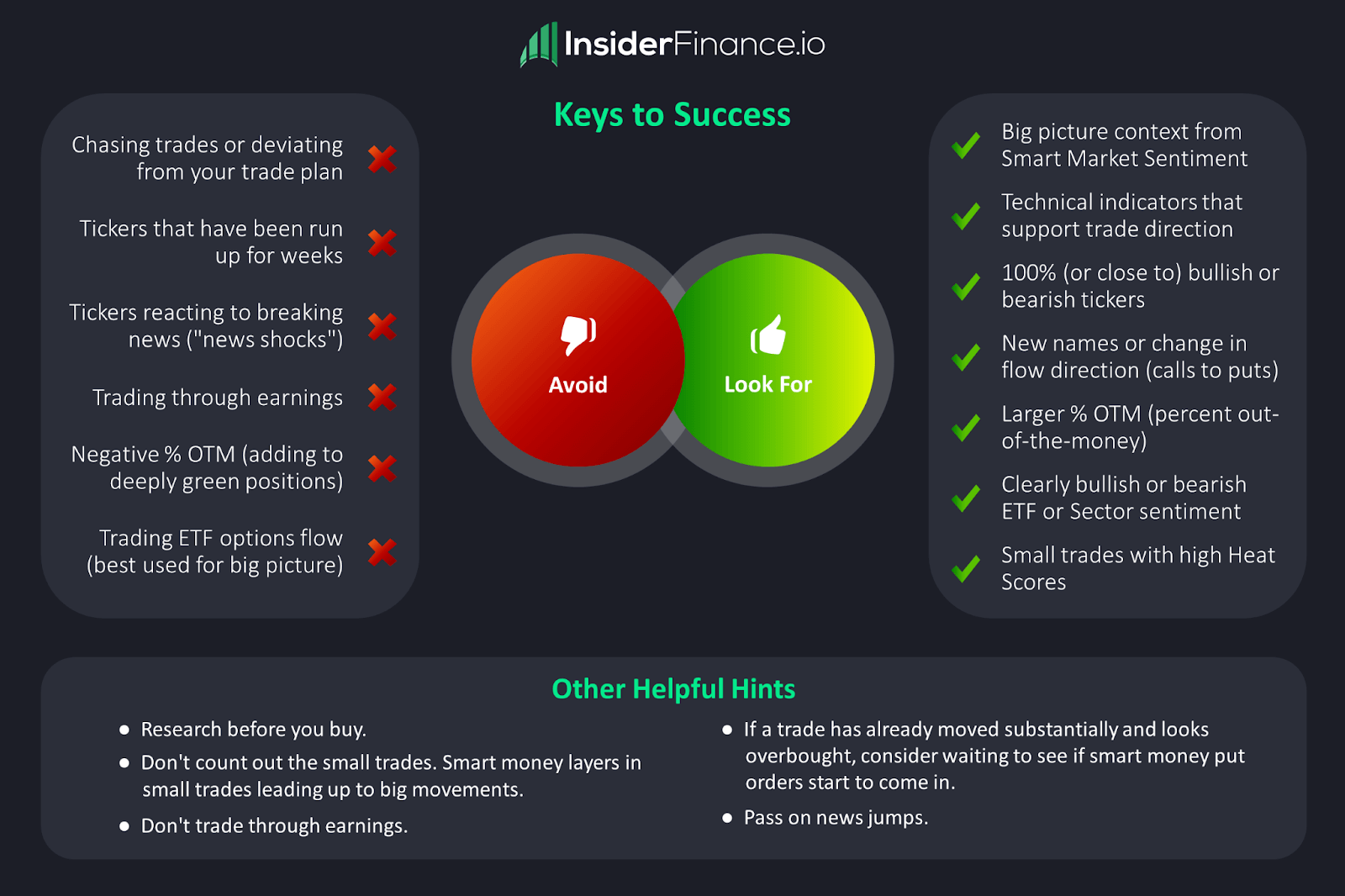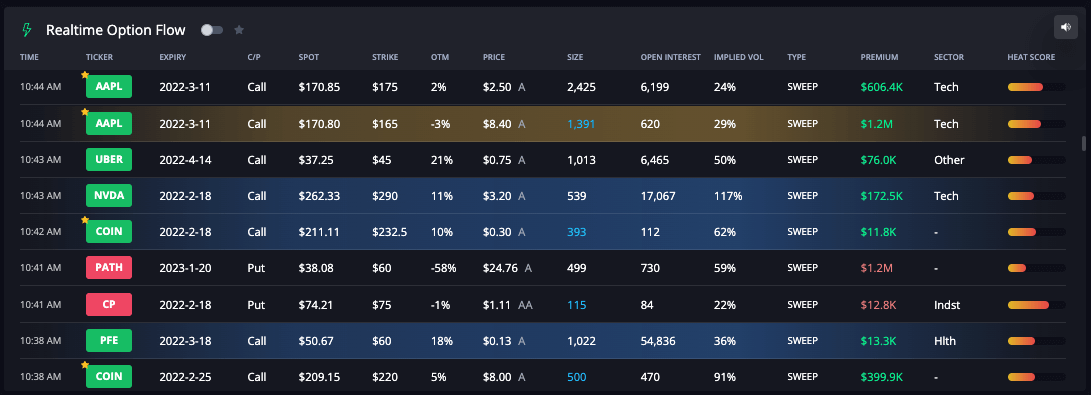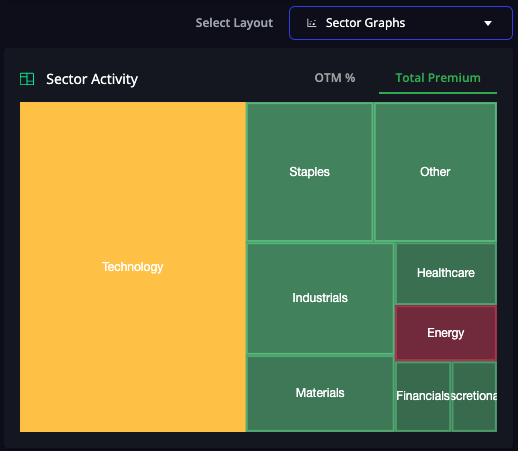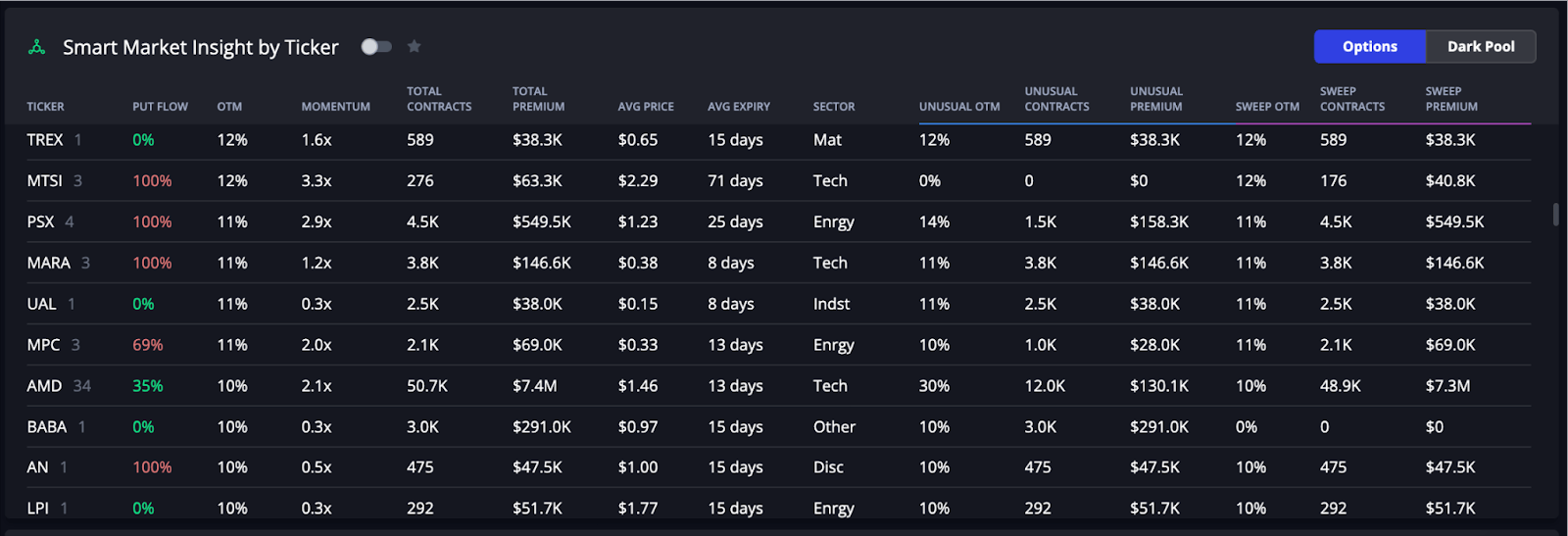Top 10 Tips for Trading with Options Flow

Why Trade with Options Flow?
Any trader can benefit from trading with options flow, whether you’re just starting or an experienced trader.
Options flow is one of the most powerful leading indicators for predicting short-term market movements. Understanding how to leverage this critical data can help you predict short-term trends with high confidence and save you from disastrous trades.
Why is options flow such a powerful indicator? Options flow gives retail traders visibility into institutions' positions that often cause large market movements.

Institutional investors use their considerable resources to access market-moving information before other market participants. They use their information advantage to confidently take significant (and often highly leveraged) positions that often cause sizable directional swings in the market.
Historically, institutional investors have used their substantial information advantage to outperform retail traders by a wide margin. However, retail traders can now use options flow for the same information advantage as institutional investors without spending millions of dollars.
How to Trade with Options Flow?
Several tools can help traders identify institutional flows. However, the best tools don’t just show where institutions are positioned — they also help traders determine which trades have the most potential within the current market context.
InsiderFinance is the complete platform for retail traders to level the data advantage with institutions while being so simple and intuitive that traders of any skill level can benefit immediately.
Our platform provides a curated list of tradable information plus multiple data points and visuals so you can make better trade decisions faster and dramatically increase your chance of success on every trade using a data-driven approach.
Our traders have found that our curated approach focused on actionable information saves hours of research daily and significantly increases their win rate.
How do we accomplish this? Underpinning the industry-leading InsiderFinance platform is a proprietary algorithm, developed by a trained Wall Street quant, that intelligently processes and filters the options flow and dark pool prints to increase your probability of success.
Our algorithms do the heavy lifting for you so you don’t have to spend hours filtering through distracting order flow.
HIGH POTENTIAL TRADES SENT DIRECTLY TO YOUR INBOX
Add your email to receive our free daily newsletter. No spam, unsubscribe anytime.
Top 10 Tips for Trading with Options Flow
Now that you understand how powerful options flow can be, let’s discuss how to trade with options flow successfully.
Tip 1: Observe the Flow

If you’re new to trading with options flow, don’t put real money on the line immediately. Trying to trade with options flow without learning some basics can lead to disastrous results.
Why? Not all options flow is the same, and you have to get a feel for the type of flow that fits your trading style to get the best results. Otherwise, you may have a false sense of security that hurts your win rate.
But don’t worry! It’s not hard to learn, and many resources are available online to learn the basics. If you’re looking for all the information you need in one place, we recommend our completely free masterclass with bite-sized lessons to make learning fast and easy.
Tip 2: Understand the Why
If you are new to using smart money order flow as a leading indicator of big market movements, start by understanding the intent behind the trade to see which ones get results.
- Why are they buying?
- What is that ticker doing today?
- Any recent news?
As you observe the options flow, focus on developing a feel for what's normal. We can see orders but not the traders' intentions.
- A large call position can be a hedge against a larger put position.
- A large put position can be a hedge against a larger call position.
We also don't know the traders' intended hold time. The trader could hold through expiration or be out of the trade in seconds.
Understanding the "why" behind an order will produce the most winners. For example, is there a catalyst, recent news, or earnings ahead?
Tip 3: Don’t Trade Blindly
This tip may sound obvious, and the concept applies to any trading strategy, even without options flow. However, it’s essential when trading options flow.
Having visibility to institutional investors' options flow is a very powerful leading indicator, but that doesn't mean you can trade it blindly.
Options flow is only one piece of the puzzle. For the highest chance of success, traders should look for multiple data points in agreement supporting a trade idea.
For example, which of the below trades are more likely to be profitable?
- Trade 1: strong bullish options flow, mixed news sentiment, very little dark pool activity, bearish technical indicators on multiple time frames
- Trade 2: strong bearish options flow, negative news sentiment, moderate dark pool activity with a few late sells, and bearish technical indicators on multiple time frames
Trade 2, of course! Why pick a trade with a mix of bearish and bullish signals when you can choose one with multiple data points all in agreement?
When trading with options flow, it’s important to consider technical analysis, dark pool activity, and news sentiment.
Tip 4: Pay Attention to the Big Picture
For best results, look for tickers that you expect to move in the same direction as the sector they’re in and the overall market.
Sectors with the highest OTM % and overwhelmingly bullish or bearish premium flow are where Wall Street expects the most considerable price movements with the most “consensus.”
Combined, these two graphs help you avoid trading “against the current.”
All ships rise with the tide, so it can be easier to trade a bullish position in a sector with almost all bullish flow.
Let’s look at an example to illustrate. The graph below shows that the technology sector has mixed sentiment, the energy sector has bearish sentiment, and all other sectors have bullish sentiment.

Based on the sector sentiment, we’d avoid technology and energy tickers to increase our chances of success.
The same concept applies to the overall market sentiment. You’ll have the best chance of success trading in the same direction as the overall market, not against it.
ETF flow is beneficial to understanding market sentiment. However, most of the put flow that comes from SPY, IWM, QQQ, and others is probably a hedge, even high dollar ones, so ETF sentiment is only meaningful when it's clearly bullish or bearish.
Tip 5: Trade Tickers with the Most Consensus
Traders have the best chance of success when trading tickers with the most “consensus.”
Tickers with close to 100% bullish or bearish flow mean institutions are “in agreement” on whether they think the price will go up or down in the short term and are not typically part of a broader strategy.
Let’s take a look at the table below to illustrate.

Which ticker seems like the most promising to research?
- AMD: 34 trades with 35% put flow
- MPC: 3 trades with 69% put flow
- PSX: 4 trades with 100% put flow
PSX, of course! Multiple trades in the same direction are much clearer than more trades with mixed sentiment.
We still can’t trade blindly as options flow is only one piece of the puzzle, but having a consensus on options flow is a good signal and a great place to start.
Tip 6: Pass on News Jumps and Earnings
Both news jumps and earnings can be unpredictable and volatile, so avoid trading in either situation.
Sometimes, stocks quickly move 2%+ when reacting to "breaking news."
Don't act on these immediately; pass or let it settle before entering. These orders are typically from high-frequency trading bots that buy and sell within seconds.
The way the stock price reacts to earnings is unpredictable. Sometimes, stocks beat earnings and dip or miss earnings but rocket upwards. That’s because it’s challenging to understand what information and predictions about earnings are already priced into the stock.
And that’s why we recommend not trading through earnings. You can always sell for the earning announcement and then buy back in. Don't get attached and trade with emotion.
Tip 7: Small Orders Matter
It's not always about big premiums. Small orders can be leading indicators that big orders will be pouring in soon.
Big flows almost always start with a small order, so pay close attention to the small orders, particularly “unusual” ones. Why?
Institutions don't just take significant positions immediately. They build positions slowly over time by averaging up into winners and cutting losers early.
So, you may see small flows at first as they start to build a new position. As they become more confident in the position (and begin to see some returns), they start placing large orders.
Tip 8: Look for New Names or Changes in Flow
Don't chase after trades that have already been run up (i.e., substantial bullish flows for weeks). The orders are likely in the money (negative OTM %) and adding to positions already deep in the green.
You'll have the best odds if you trade tickers that are either seeing new flow or where the flow has changed directions (from bullish to bearish or from bearish to bullish). Puts that come in after large bull runs can be big winners.
Tip 9: Manage Your Risk
Managing risk well can be the difference between being profitable and losing money. While often overlooked, the concept is critical.
A well-defined risk management strategy has two parts:
- Clearly defined entries and exits
- Multi-leg options strategies
Traders can significantly increase profits using a data-driven framework to decide when to trim positions while winners run and when to cut losses early.
Traders can also manage risk by choosing lower-risk options like a vertical debit spread or vertical credit spread.
Institutions may take high-risk single-leg options contracts, but you don’t have to trade the exact contracts as institutions. Instead of trading the same contract an institution is trading, you can de-risk your trade in a few different ways:
- Multi-leg strategy with lower risk
- Longer expirations
- Closer to being at the money
- Stocks instead of options
Any or all of these will lower the volatility of the trade, which may make it easier to manage and increase its chances of profitability.
Even if you’re not taking the exact trades as institutions, options flow is still incredibly valuable in predicting short-term market direction.
After you know the direction based on institutional activity, you can adjust the trade risk to match your tolerance better using any of the above strategies.
Tip 10: Stick To Your Trade Plan
We saved the best for last! Trading is mostly psychology, so having a trade plan is incredibly important so you avoid trading with emotion.
- Don't blindly trade - do your research.
- Pick an entry and exit point before you trade.
- Stick to the plan, and don't trade on emotion.
Start Trading with Options Flow
After these tips, you’re ready to start trading with options flow (and winning on more trades)!
Remember to set stop losses and start with small amounts/paper trading, especially if these concepts are new to you. They’re powerful concepts, but always protect your capital as you learn something new.
HIGH POTENTIAL TRADES SENT DIRECTLY TO YOUR INBOX
Add your email to receive our free daily newsletter. No spam, unsubscribe anytime.








